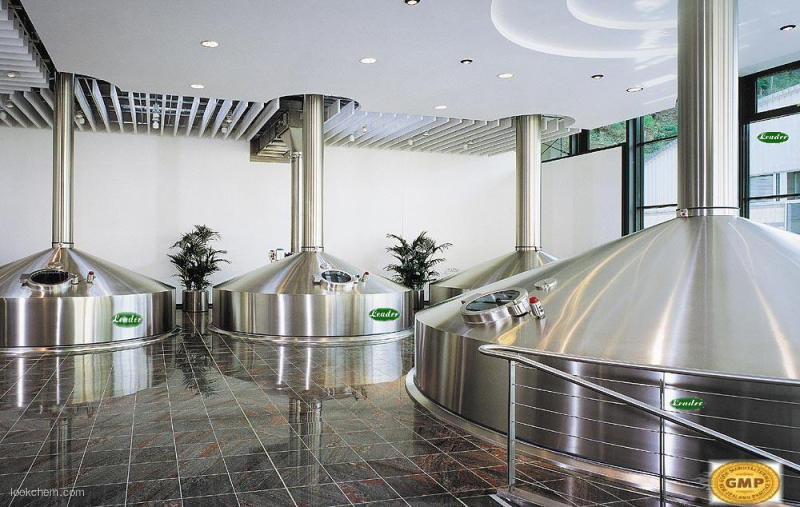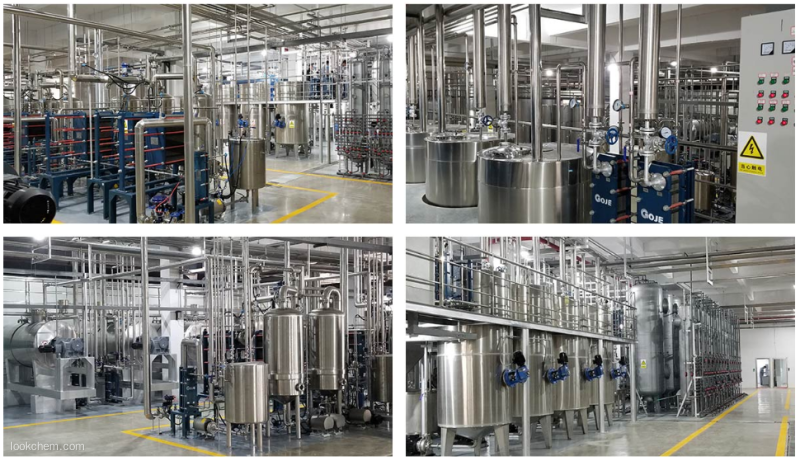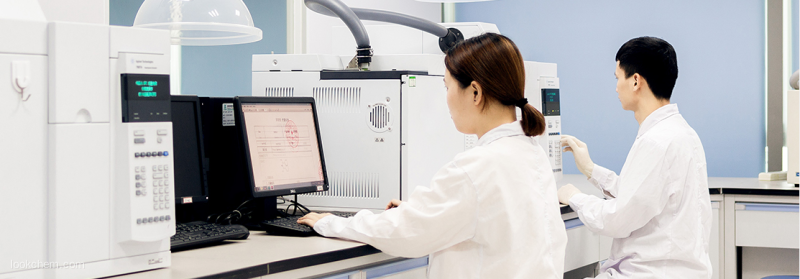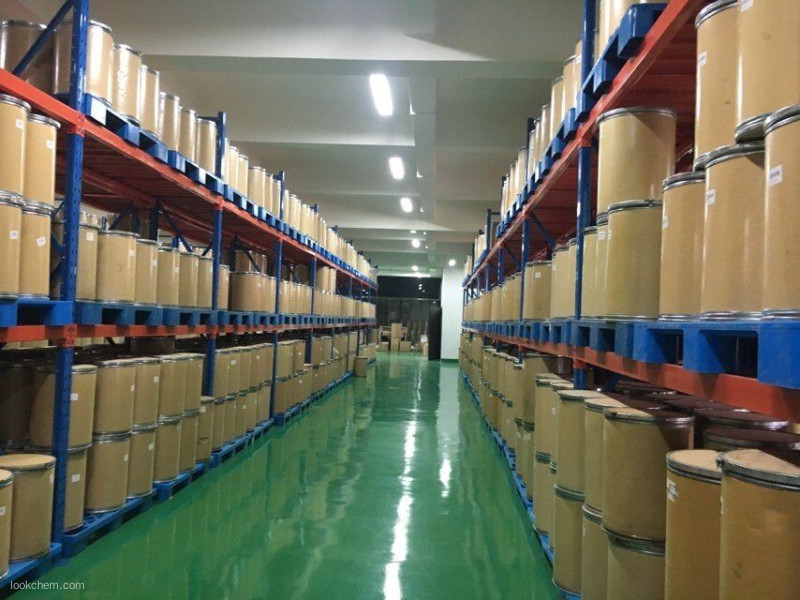PRODUCT DETAILS
| |
| D-Tartaric acid Chemical Properties |
| Melting point |
172-174 °C(lit.) |
| alpha |
-12.1 º (c=20, H2O) |
| Boiling point |
191.59°C (rough estimate) |
| density |
1,8 g/cm3 |
| refractive index |
-12.5 ° (C=5, H2O) |
| Fp |
210 °C |
| storage temp. |
Store below +30°C. |
| solubility |
water: soluble100mg/mL, clear, colorless |
| pka |
3.0, 4.4(at 25℃) |
| form |
Crystals or Crystalline Powder |
| color |
White |
| optical activity |
[α]20/D 13.5±0.5°, c = 10% in H2O |
| Water Solubility |
1394 g/L (20 ºC) |
| Sensitive |
Light Sensitive |
| Merck |
14,9068 |
| BRN |
1725145 |
| Stability: |
Stable. Incompatible with oxidizing agents, bases, reducing agents. Combustible. |
| InChIKey |
FEWJPZIEWOKRBE-LWMBPPNESA-N |
| CAS DataBase Reference |
147-71-7(CAS DataBase Reference) |
| NIST Chemistry Reference |
D-Tartaric acid(147-71-7) |
| EPA Substance Registry System |
Butanedioic acid, 2,3-dihydroxy-, (2S,3S)- (147-71-7) |
| Hazard Codes |
Xi |
| Risk Statements |
36/37/38 |
| Safety Statements |
26-36/37-37/39-36 |
| WGK Germany |
3 |
| RTECS |
WW7875000 |
| Autoignition Temperature |
425 °C |
| Hazard Note |
Light Sensitive |
| TSCA |
Yes |
| HS Code |
29181200 |
| Provider |
Language |
| (2S,3S)-(-)-Tartaric acid |
English |
| SigmaAldrich |
English |
| ACROS |
English |
| ALFA |
English |
| |
| D-Tartaric acid Usage And Synthesis |
| Chemical properties |
There are three stereoisomers of tartaric acid: dextrose tartaric acid, levophyllic acid and meso tartaric acid. The optical rotation of the mixture of the same amount of dextrorotatory and levorotism is mutually offset, known as racemic tartaric acid. The mesomer does not exist in nature and can be synthesized chemically. Various tartaric acids are colorless crystals that are easily soluble in water. |
| Application |
D-(-)-tartaric acid is widely used as an acidizing agent for beverages and other foods, and this use is similar to citric acid. Tartaric acid can be used as an acid dye mordant when it is combined with tannin. It is also used for some development and fixing operations in the photographic industry. Its iron salts are photosensitive and therefore they can be used to make blueprints. Tartaric acid could complex with a variety of metal ions, and it could be used for cleaning agent and polishing agent of metal surface. Potassium tartrate (Rochelle salt) can be used to prepare Fehling reagent, and it is also used as as laxatives and diuretics in medicine. In addition, it is also used as an intermediate of quinophan. The crystal has piezoelectric properties, so it could be used for the electronics industry.
It is used as a chromatographic reagent and masking agent.
It is used as resolving agent of medicine and as biochemical reagent. This product is widely used in food industry, such as beer foaming agent, food sour agent, flavoring agent. And it is also used for refreshing drinks, candy, fruit juice, sauce, cold dishes and baking powder. This product is in line with the Japanese food additives certificate.
It is used as chiral source and resolving agent for chiral synthesis. |
| Preparation |
D-(-)-tartaric acid is mainly present in the form of potassium salt in the fruit of a variety of plants, and a small amount of it exists in free form. We produce dextrose tartaric acid through glucose fermentation industrially. The racemate can be prepared by fumaric acid with potassium permanganate as oxidant. The mesomer can be prepared by maleic acid with potassium permanganate as oxidant. L-lactic acid can be obtained by resolution of racemates. In the practical application of tartaric acid, the main application is dextrose tartaric acid or its complex salt. The by-product tartra of brewing grape is the main raw material of actual production of tartaric acid, and the all tartaric acids are dextrose tartaric acids. |
| Chemical Properties |
white crystals |
| Uses |
D-(-)-Tartaric Acid the synthetic enantiomer of L-(+)-Tartaric Acid (T007630), used in the preparation of synthetic analgesics. |
| Uses |
tartaric acid is the second largest AHA in size (glycolic acid being the smallest AHA and citric acid the largest). It is not frequently used in cosmetic or anti-aging preparations as formulators find it difficult to work with and it can cause irritation to the skin. |
| Uses |
Tartaric Acid is an acidulant that occurs naturally in grapes. It is hygroscopic and rapidly soluble, with a solubility of 150 g in 100 ml of distilled water at 25°c. It has a slightly tarter taste than citric acid, with a tartness equivalent of 0.8–0.9. It augments the flavor of fruits in which it is a natural constituent. It is used in grapeand limeflavored beverages and grape-flavored jellies. It is used as an acidulant in baking powder and as a synergist with antioxidants to prevent rancidity. |
| Uses |
D-(-)-Tartaric acid is used as a resolving agent in organic synthesis. It is used as a precursor for the preparation of its ester derivatives like D-tartaric acid diethyl ester, D-tartaric acid dimethyl ester and D-tartaric acid diiso-propyl ester. It finds application in the synthesis of chiral aziridine derivative, a common intermediate for the preparation of hydroxyethylamine class HIV protease inhibitors viz. as saquinavir, amprenavir and nelfinavir. It is widely used in the food industry as a beer foaming agent, for food acidity regulations and as a flavoring agent. |
| Definition |
ChEBI: The D-enantiomer of tartaric acid. |
| Biotechnological Production |
Tartaric acid is generally produced from crude tartar and lees, which are byproducts of wine production. However, there are a few reports of fermentative production of tartaric acid by Gluconobacter suboxydans growing on Glucose or sorbitol. Vanadate plays a central role in this process. The microorganism forms 5-keto-D-gluconic acid, which is oxidized to tartaric acid. The vanadium catalyzes this reaction. Product concentrations up to 2.96 g.L-1 have been observed after 3 days of fermentation. |
| General Description |
D-(-)-Tartaric acid is a polycrystalline solid, widely used as food additive. It has been reported to exhibit piezoelectric effect.
|
| Purification Methods |
Crystallise the acid from distilled H2O or *benzene/diethyl ether containing 5% of pet ether (b 60-80o) (1:1). Soxhlet extraction with diethyl ether has been used to remove an impurity absorbing at 265nm. It has also been crystallised from absolute EtOH/hexane and dried in a vacuum for 18hours [Kornblum & Wade J Org Chem 52 5301 1987]. [Beilstein 3 IV 1229.] |
| |
| D-Tartaric acid Preparation Products And Raw materials |
| Raw materials |
Sodium hydroxide-->Hydrochloric acid-->Calcium chloride-->Maleic acid-->Fumaric acid-->L(+)-Tartaric acid-->D(-)-Tartaric acid-->Calcium chloride hexahydrate |
| Preparation Products |
(S)-3-Aminoquinuclidine dihydrochloride-->(R)-(-)-3-Quinuclidinol-->(1R,2R)-(+)-1,2-Diphenylethylenediamine-->(S)-1-Boc-3-(hyroxymethyl)piperidine-->(R)-(+)-BORNYLAMINE-->(-)-DIOP-->(3S,4S)-(-)-1-BENZYL-3,4-BIS(DIPHENYLPHOSPHINO)PYRROLIDINE-->trans-2,5-Dimethylpiperazine-->(-)-(1S,4R)-4-AMINOCYCLOPENT-2-ENECARBOXYLIC ACID-->(R,R)-(+)-BIS(ALPHA-METHYLBENZYL)AMINE HYDROCHLORIDE-->(S)-(+)-3-Quinuclidinol-->(R)-1-Boc-3-(hyroxymethyl)piperidine-->1H-Azepine-4-carboxylicacid,hexahydro-,methylester,(4S)-(9CI)-->(-)-Dimethyl D-tartrate-->(1R,2R)-(-)-1,2-Diaminocyclohexane-->(-)-Taddol |
|
|
|
|
|
|
|
|
|
|
|
|
|
|
|
|
|
About US
Leader Biochemical Group is a large leader incorporated industry manufacturers and suppliers of advanced refined raw materials From the year of 1996 when our factory was put into production to year of 2020, our group has successively invested in more than 52 factories with shares and subordinates.We focus on manufacture Pharm & chemicals, functional active ingredients, nutritional Ingredients, health care products, cosmetics, pharmaceutical and refined feed, oil, natural plant ingredients industries to provide top quality of GMP standards products.All the invested factories' product lines cover API and intermediates, vitamins, amino acids, plant extracts, daily chemical products, cosmetics raw materials, nutrition and health care products, food additives, feed additives, essential oil products, fine chemical products and agricultural chemical raw materials And flavors and fragrances. Especially in the field of vitamins, amino acids, pharmaceutical raw materials and cosmetic raw materials, we have more than 20 years of production and sales experience. All products meet the requirements of high international export standards and have been recognized by customers all over the world. Our manufacture basement & R&D center located in National Aerospace Economic & Technical Development Zone Xi`an Shaanxi China. Now not only relying on self-cultivation and development as well as maintains good cooperative relations with many famous research institutes and universities in China. Now, we have closely cooperation with Shanghai Institute of Organic Chemistry of Chinese Academy of Science, Beijing Institute of Material Medical of Chinese Academy of Medical Science, China Pharmaceutical University, Zhejiang University. Closely cooperation with them not only integrating Science and technology resources, but also increasing the R&D speed and improving our R&D power. Offering Powerful Tech supporting Platform for group development. Keep serve the manufacture and the market as the R&D central task, focus on the technical research. Now there are 3 technology R & D platforms including biological extract, microorganism fermentation and chemical synthesis, and can independently research and develop kinds of difficult APIs and pharmaceutical intermediates. With the strong support of China State Institute of Pharmaceutical Industry (hereinafter short for CSIPI), earlier known as Shanghai Institute of Pharmaceutical Industry (SIPI), we have unique advantages in the R & D and industrialization of high-grade, precision and advanced products. Now our Group technical force is abundant, existing staff more that 1000 people, senior professional and technical staff accounted for more than 50% of the total number of employees, including 15 PhD research and development personnel, 5 master′ S degree in technical and management personnel 9 people. We have advanced equipment like fermentation equipment and technology also extraction, isolation, purification, synthesis with rich production experience and strict quality control system, According to the GMP required, quickly transforming the R&D results to industrial production in time, it is our advantages and our products are exported to North and South America, Europe, Middle East, Africa, and other five continents and scale the forefront in the nation, won good international reputation. We believe only good quality can bring good cooperation, quality is our key spirit during our production, we are warmly welcome clients and partner from all over the world contact us for everlasting cooperation, Leader will be your strong, sincere and reliable partner in China.
Group profiles
Our Factories production lines



Our Factories R&D ability


Our Factories warehouse




 Premiumsupplier
Premiumsupplier 



